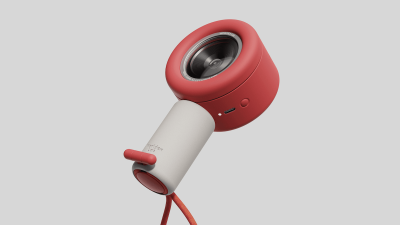Dex: The AI-Powered Camera Revolutionizing Children's Language Learning
@devadigax20 Aug 2025

Dex, a newly unveiled tech gadget, is poised to disrupt the children's language learning market. This innovative device leverages the power of artificial intelligence to translate objects into different languages, offering a playful and engaging approach to multilingual education. Instead of relying on traditional flashcards or tedious rote learning, Dex utilizes a child-friendly interface and a simple, intuitive process: point, shoot, and learn.
The device itself resembles a sturdy, child-proof camera, designed to withstand the inevitable bumps and drops that come with young explorers. Its compact size ensures portability, making it ideal for use at home, school, or even on family trips. Children simply point the camera at an object – a toy, a fruit, a piece of furniture – and snap a picture. Dex's sophisticated AI then identifies the object and instantly displays its name in multiple pre-programmed languages, clearly and audibly. This immediate feedback loop is crucial for effective learning, particularly for younger children.
The impact of this technology extends beyond simply teaching vocabulary. The visual element connects the word to the physical object, strengthening memory retention and building a stronger understanding of the concept. This holistic approach mirrors how children naturally learn their first language, connecting words to visual representations in their surroundings.
While the initial languages supported haven't been fully specified, the potential for expansion is significant. Imagine the possibilities: children learning Spanish while exploring their backyard, identifying French pastries during a family vacation, or understanding German words for their favorite toys. The adaptability of this technology allows for personalized learning experiences, catered to individual interests and developmental stages.
Moreover, the gamified nature of Dex fosters a positive learning environment. The excitement of discovering new words and sounds encourages engagement, replacing the often-dreaded monotony of traditional language learning. This approach is especially valuable in the early stages of language acquisition, where fostering a love for learning is paramount.
However, some challenges remain. The accuracy of the AI's object recognition and translation will be crucial for the device's success. The quality of the audio output, clarity of the interface, and robust parental controls also need to be carefully considered. Future iterations may benefit from incorporating augmented reality features, further enriching the learning experience.
Nevertheless, Dex represents a significant leap forward in children's education technology. By combining the immediacy of visual learning with the power of AI, Dex promises to make language learning accessible, enjoyable, and effective for a new generation of multilingual children. The long-term effects on literacy and cross-cultural understanding could be truly transformative.
The device itself resembles a sturdy, child-proof camera, designed to withstand the inevitable bumps and drops that come with young explorers. Its compact size ensures portability, making it ideal for use at home, school, or even on family trips. Children simply point the camera at an object – a toy, a fruit, a piece of furniture – and snap a picture. Dex's sophisticated AI then identifies the object and instantly displays its name in multiple pre-programmed languages, clearly and audibly. This immediate feedback loop is crucial for effective learning, particularly for younger children.
The impact of this technology extends beyond simply teaching vocabulary. The visual element connects the word to the physical object, strengthening memory retention and building a stronger understanding of the concept. This holistic approach mirrors how children naturally learn their first language, connecting words to visual representations in their surroundings.
While the initial languages supported haven't been fully specified, the potential for expansion is significant. Imagine the possibilities: children learning Spanish while exploring their backyard, identifying French pastries during a family vacation, or understanding German words for their favorite toys. The adaptability of this technology allows for personalized learning experiences, catered to individual interests and developmental stages.
Moreover, the gamified nature of Dex fosters a positive learning environment. The excitement of discovering new words and sounds encourages engagement, replacing the often-dreaded monotony of traditional language learning. This approach is especially valuable in the early stages of language acquisition, where fostering a love for learning is paramount.
However, some challenges remain. The accuracy of the AI's object recognition and translation will be crucial for the device's success. The quality of the audio output, clarity of the interface, and robust parental controls also need to be carefully considered. Future iterations may benefit from incorporating augmented reality features, further enriching the learning experience.
Nevertheless, Dex represents a significant leap forward in children's education technology. By combining the immediacy of visual learning with the power of AI, Dex promises to make language learning accessible, enjoyable, and effective for a new generation of multilingual children. The long-term effects on literacy and cross-cultural understanding could be truly transformative.
 AI Tool Buzz
AI Tool Buzz